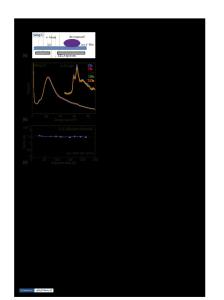An In Situ transmission electron microscope deformation study of the slip transfer mechanisms in metals
- PDF / 3,353,702 Bytes
- 11 Pages / 594 x 774 pts Page_size
- 80 Downloads / 474 Views
I.
INTRODUCTION
To understand the mechanical properties of a material, it is essential to understand why some grain boundaries are intrinsically weak while others are effective barriers against the passage of dislocations and how such boundaries transfer strain between adjoining grains. Recently, Bond e t a / . [1] and Lee e t a / . [21 have demonstrated that even in materials with boundaries that are intrinsically weak, the first stage in the deformation is the motion of lattice dislocations. The mobile dislocations interact with each other to form a dislocation substructure and impinge on the grain boundary, where they form a dislocation pileup. The grain boundary can accommodate many lattice dislocations before it responds. Intrinsically weak boundaries respond by nucleating and propagating a crack along the grain boundary, whereas stronger boundaries respond by activating grain boundary dislocation sources. The sources need not be coincident with the dislocation pileup site. The boundary response mechanism was also shown to be sensitive to the boundary microchemistry. A remaining problem is how to predict which slip system will be activated in one grain by the presence of a stress concentration (such as a dislocation pileup) in the adjacent grain. The situation where a lattice dislocation in grain 1 approaches a grain boundary and a dislocation is ejected from the grain boundary into grain 2 is shown schematically in Figure 1. The angle between the lines of intersection made by the slip planes with the grain boundary is c~. The question arises: how does the dislocation in grain 1 "pass through" the grain boundary to become the dislocation in grain 2? From geometric arguments, it is apparent that if the slip planes in both grains have a common line of intersection in the grain boundary (i.e., a = 0) and if this is collinear with the Burgers vectors of the dislocations, then the dislocation in grain 1 can pass unimpeded as a screw dislocation T.C. LEE, Visiting Assistant Professor, I.M. ROBERTSON, Associate Professor, and H.K. BIRNBAUM, Professor, are with the Department of Materials Science and Engineering, University of Illinois, Urbana, IL 61801. This paper is based on a presentation made in the symposium "Interface Science and Engineering" presented during the 1988 World Materials Congress and the TMS Fall Meeting, Chicago, IL, September 26-29, 1988, under the auspices of the ASM-MSD Surfaces and Interfaces Committee and the TMS Electronic Device Materials Committee. METALLURGICAL TRANSACTIONS A
through the grain boundary into grain 2. This is termed the "direct transfer mechanism." It can occur only at grain boundaries of particular 2 values and is independent of the grain boundary orientation within this class of values. The situation where a ~ 0 (Figure 1) is more common. In this configuration, the mechanism by which strain is transferred through the grain boundary is not well established. One possibility is that the lattice dislocations may enter the grain boundary and dissociate into grain boundary di
Data Loading...











